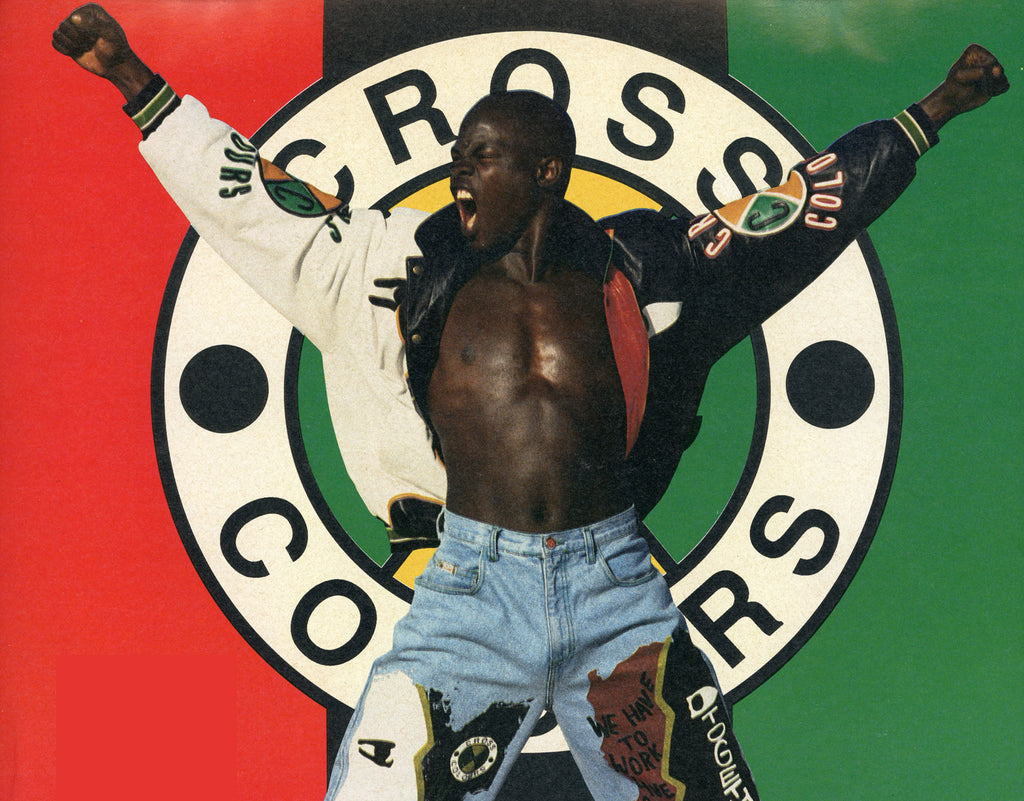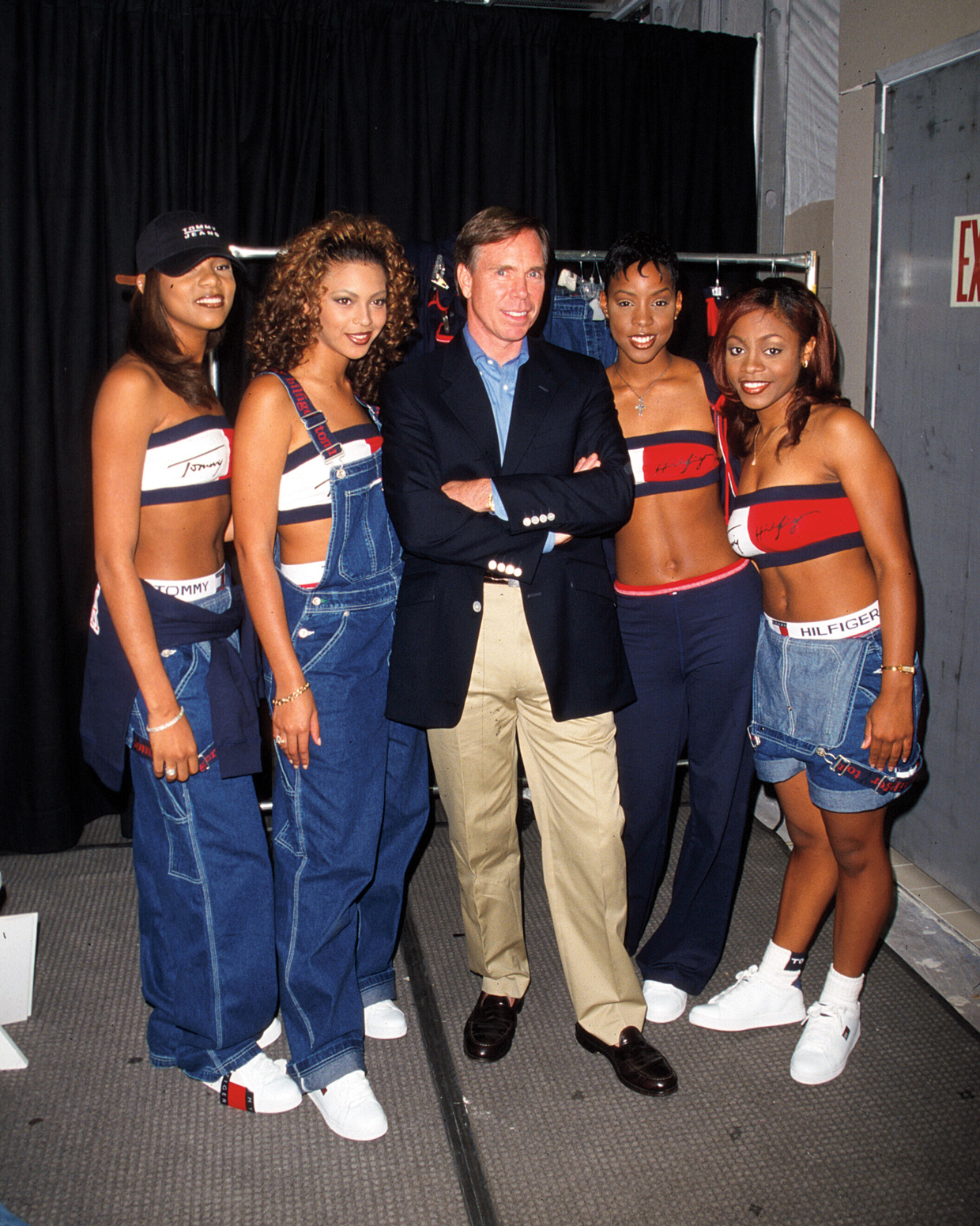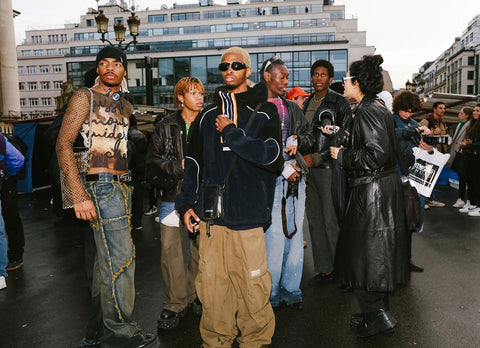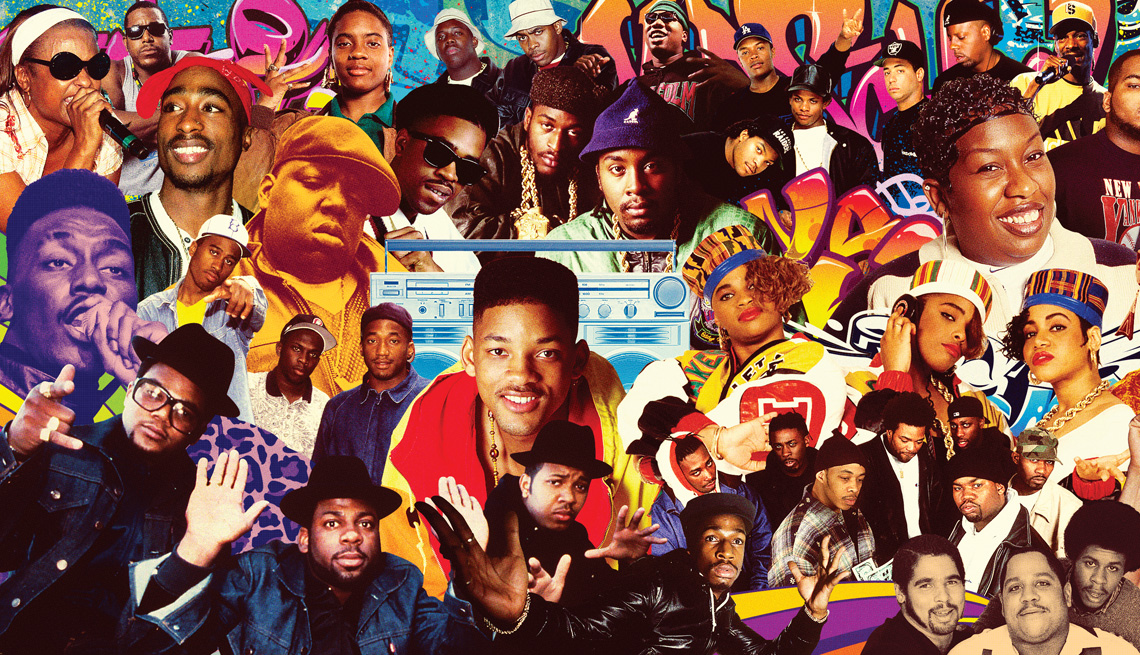Illustration by Sean McCabe.
While hip-hop and its accompanying fashion in the 1990s was born in New York, New Jersey entered the scene in its own way with some of the genre’s most influential artists like Lauryn Hill, Wyclef Jean and Redman–who are all from Jersey.
Hip-hop is a music genre known for originating in the 1970s in Bronx, New York. As the genre gained traction, it spread outside of the city and has evolved into the mainstream genre it is today.
This subculture/cultural movement was created as a way for African Americans and Latinos to express themselves and raise awareness on issues like crime, politics and poverty in their community and promote societal change.
The official pillars of hip-hop culture were MCing/rapping, DJing, breakdancing, beatboxing and graffiti art. These pillars inevitably influenced many of the fashion trends that emerged from that era.
As seen in most subcultures, the fashion during this time became an extension of self-expression for the community along with the music.
Jose Agosto, a New Jersey resident, spent a lot of time in New York during the 90s and got to experience the culture firsthand. Agosto was in his late teens/early twenties during the 90s hip-hop period.

“I miss everything about that era. My favorite part was being able to experience the culture. 90s hip-hop is where it all started so I loved going to the parties and experiencing the music and fashion in person,” Agosto told Slice of Culture.
Wardrobe Staples
This era of R&B / hip-hop fashion was very big on being fly without compromising comfort. Baggy silhouettes were already introduced into hip-hop fashion but became the standard in the 90s. R&B and hip-hop artists and their fans were wearing:
- Baggy denim: a key elements of 90s R&B/Hip-Hop. Rappers would wear super baggy jeans while female R&B artists like TLC, Aaliyah and Destiny’s Child would wear Dungarees (denim overalls).
- Oversized coats & furs: a staple during the 90s as well. Depending on the type of coat, they’d often be seen as status symbols due to how expensive they could be. Marc Kaufman furs were the go-to for rap artist’s music videos, photoshoots and movies.
- Baggy jerseys: this introduced sport and athletic influences into fashion. Brands like Adidas and Nike became popular in the hip-hop community once associated with its artists and their music.
- Workwear labels: 90s hip-hop introduced clothing intended for construction workers as fashion. Timberland and Carhartt were (and still are) the most popular workwear brands from this time.
Unlike today, there was no internet in the 90s for people to keep up with the latest trends so people relied on live performances, music videos, magazine spreads, TV and film. Iconic shows and movies that rep the 90s hip-hop aesthetic are “Fresh Prince of Bel-Air,” “Poetic Justice,” “Juice” and “Boyz in the Hood.”
“When I was first getting into hip-hop I started by listening to NWA so we were into the Raider fits and anything silver and black,” said Agosto.
“Eventually I got into Naughty by Nature and Redman’s music too which got us into incorporating construction clothing into our outfits. We would tuck our baggy jeans into Timberland boots and wear Carhartt vests/jackets.”
Famous Brands

One of the most notorious fashion brands of this subculture is Cross Colours, a black-owned brand founded in 1989. It is known for being one of the first streetwear brands before streetwear was even a thing. The brand was worn by legendary artists like Snoop Dogg, Aaliyah, TLC and Tupac.
In the 90s, there were various fashion brands that became popular in the hip-hop community even if they weren’t the intended audience for that specific brand. Cross Colours was created with the intention of representing the Black & hip-hop community while being open to all.
“We recognized that our community spent a considerable amount of money on brands that were not considering us when it came to how the clothing was designed and marketed. We didn’t see ourselves reflected in ad campaigns. We knew there was a need and we were determined to create a brand that our community could see themselves in,” stated Carl Jones, founder of Cross Colours, in an interview with Document Journal.
Carl Jones was referring to brands like Tommy Hilfiger, Calvin Klein, Nautica and Polo Ralph Lauren. Although very popular within the community these brands weren’t originally marketed with the urban and hip-hop community in mind. Upper-middle-class America was their target consumer as presented in their ads during the time.
This set Cross Colours apart from those brands. Cross Colours set the tone for other successful streetwear fashion brands during this era. Other black-owned streetwear brands that came up during the 90s were Rocawear by Jay-Z, Phat Farm by Russell Simmons, Sean John by Diddy and FUBU by Daymond John.
Tommy Hilfiger, a brand known for its preppy aesthetic, embraced its popularity in 90s hip-hop fashion as it was worn by celebrities. This led to R&B and hip-hop musicians being incorporated into many of their shows and campaigns.

Fashion as a Status Symbol
During the 90s, certain brands were known for their exclusivity and even became status symbols. 8-ball jackets, a style of expensive leather jackets designed by Michael Hoban, were very popular during this time due to being worn by some of the biggest hip-hop artists.
In New York City, coat-related robberies became very common and some even ended in fatalities. As a result of this, several clothing stores no longer kept these 8-ball jackets in stock to prevent themselves from being robbed as well.
Impact on Trends Today
“Even though some of those trends have come back, they’ve changed a lot too. I have times where I try to rock some of my clothes I wore during the 90s and it just doesn’t feel the same,” shared Agosto.
“I could see the style fully coming back if artists like Drake were to put them on the map again since he has a lot of influence on the current culture.”
Although the fashion trends that emerged from the 90s hip-hop era are prevalent in the fashion industry today, fashion has evolved so much. It’s no longer just considered hip-hop fashion but apart of a much bigger style, streetwear.

In the 90s, it was easier to distinguish what music a person listened to by the clothing and brands they decided to wear. With time, this was no longer the case as streetwear became more popular. Streetwear encapsulates a mixture of various fashion styles and trends into one.
My Thoughts on 90s Hip-Hop Fashion
After over 50 years of hip-hop, what started off as just a community creating memories together through their shared love of music and fashion has become apart of American history and culture.
90s hip-hop is one of the fashion eras I definitely wish I was old enough to experience while it was unfolding. It’s one of those periods you just had to be there to really understand its essence. It’s the root of a lot of the music and fashion styles I enjoy today.


